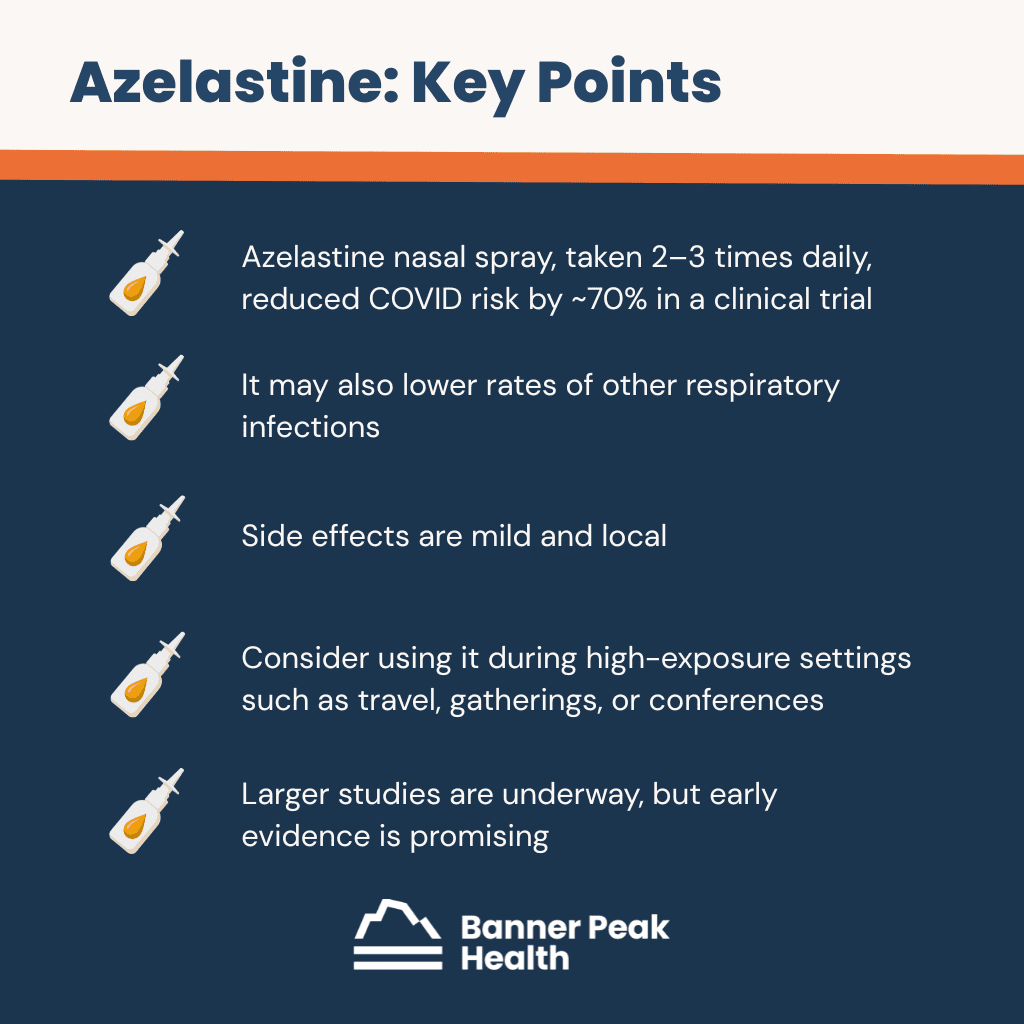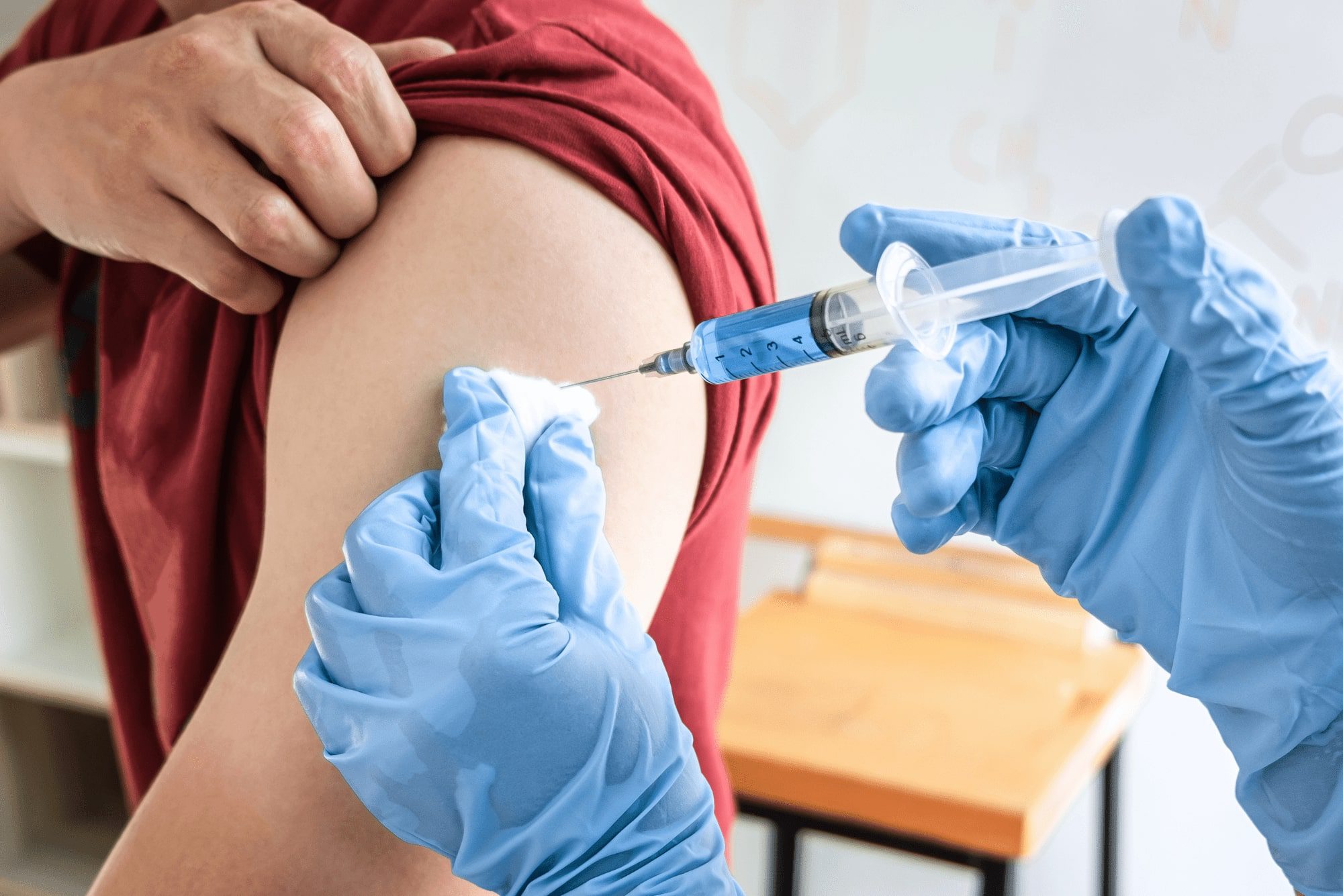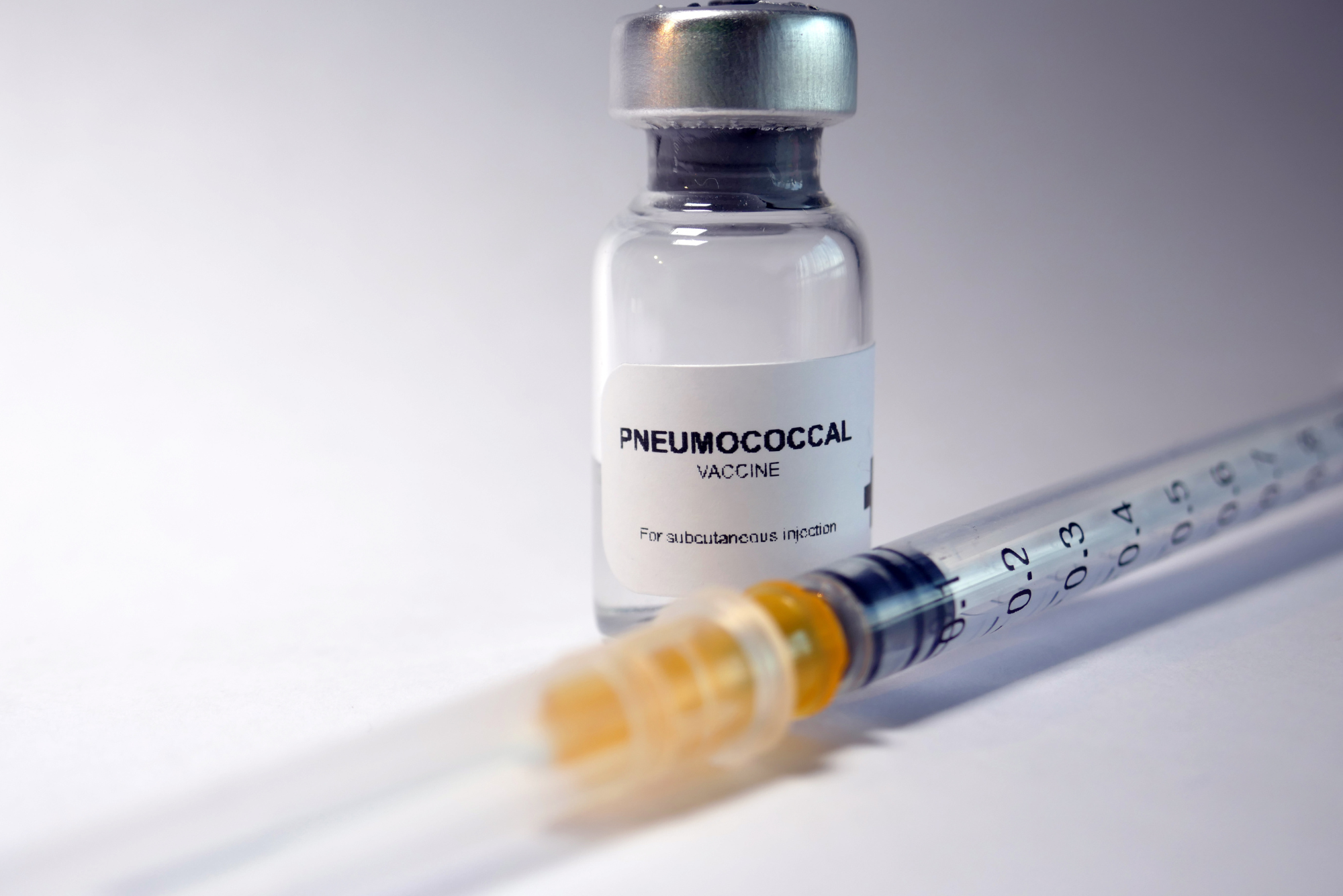Getting COVID is never fun.
Last September, I attended a national physician conference and came home with an unwelcome souvenir: COVID. I developed a relatively mild case, but nonetheless, I wasn’t myself for at least a few weeks.
Fast-forward to the same conference in 2025. This time, I went armed with azelastine nasal spray, an over-the-counter antihistamine commonly used for allergies. I applied one spray in each nostril twice a day.
The meeting became what most would call a superspreader event: More than 20 of about 100 attendees caught COVID. But I dodged the bullet.
The Science: Blocking the Virus at the Gate
Azelastine isn’t new. It’s been used safely for decades to treat allergic rhinitis. What’s new is our understanding of how it might protect against respiratory viruses.
COVID and many other upper respiratory infections begin in the nose. The COVID virus binds to ACE-2 receptors on nasal cells — the same area azelastine coats when sprayed.
In laboratory and animal models, azelastine disrupts viral entry, reduces local inflammation, and even interferes with enzymes needed for viral replication. It seems to make the nasal environment less hospitable to infection.
The CONTAIN Trial: From Theory to Proof
In 2025, researchers at Saarland University Hospital published the CONTAIN trial in JAMA Internal Medicine.
Four hundred fifty healthy adults used either azelastine 0.1% or a placebo three times daily for 56 days. Participants self-tested twice weekly for COVID and were screened for other viral infections when symptomatic.
Results:
- COVID infection occurred in 2.2% of the azelastine group vs. 6.7% of the placebo group — a 69% reduction in risk.
- Colds caused by rhinovirus were also reduced (1.8% vs. 6.3%).
- Side effects were mild — mostly a brief bitter taste or a minor nose irritation.
Azelastine’s effect was localized, safe, and surprisingly broad, suggesting protection not only from COVID but also from everyday URIs.
Why This Matters
Vaccines and antivirals remain our strongest defenses against severe disease, but their ability to prevent infection wanes over time and with new variants. Azelastine adds another layer: a topical, low-cost, non-systemic option that can be started immediately and used intermittently — say, during travel, conferences, or cold-and-flu season.
Because azelastine is already FDA-approved for allergies, it’s accessible and familiar. Its mechanism is preventive, not curative. It’s a daily shield, not a rescue medication.
Sometimes, progress doesn’t require a new drug — just a new way of using an old one.
Today’s Takeaways
- Azelastine nasal spray, taken two to three times daily, reduced COVID risk by ~70% in a clinical trial.
- It may also lower rates of other respiratory infections.
- Side effects are mild and local.
- Consider using it during high-exposure settings such as travel, gatherings, or conferences.
- Larger studies are underway, but early evidence is promising.
- Available without a prescription.
At Banner Peak Health, we continue to explore evidence-based, practical tools for optimizing resilience. Sometimes, the simplest interventions, like a nasal spray, can make the biggest difference.


Barry Rotman, MD
For over 30 years in medicine, Dr. Rotman has dedicated himself to excellence. With patients’ health as his top priority, he opened his own concierge medical practice in 2007 to practice medicine in a way that lets him truly serve their best interests.




